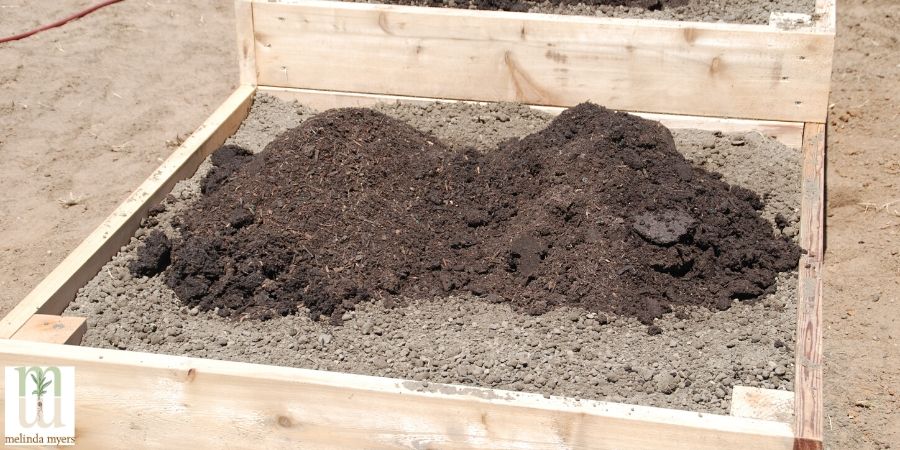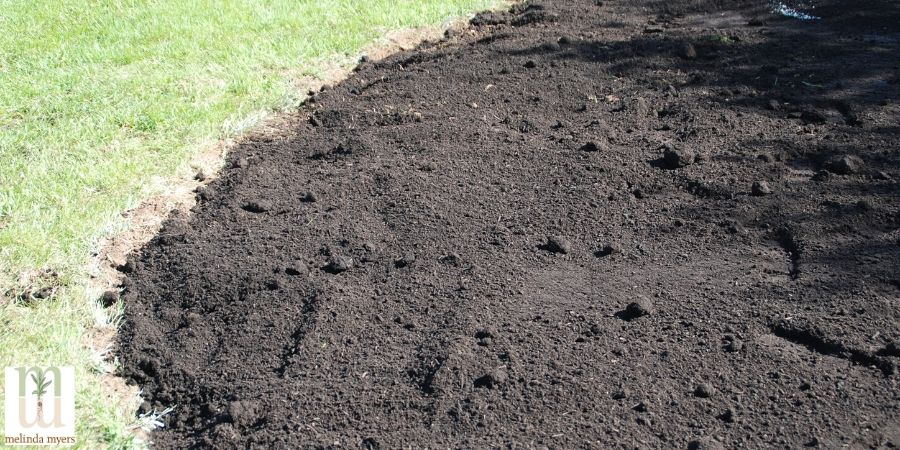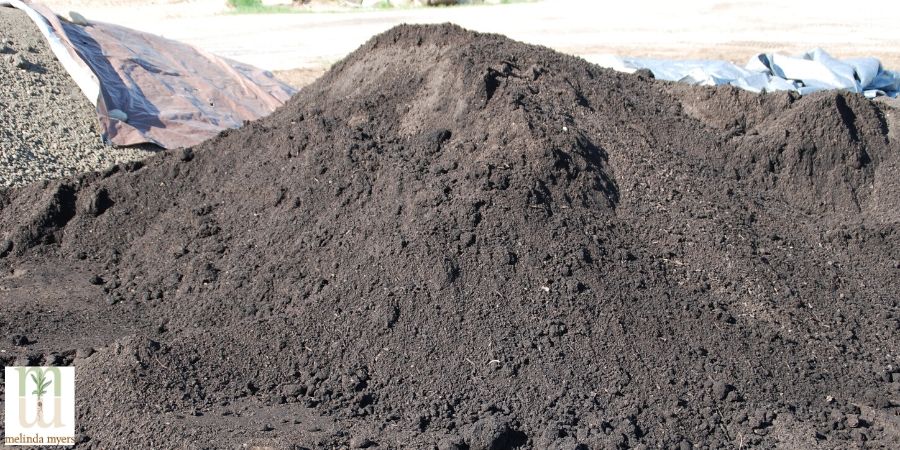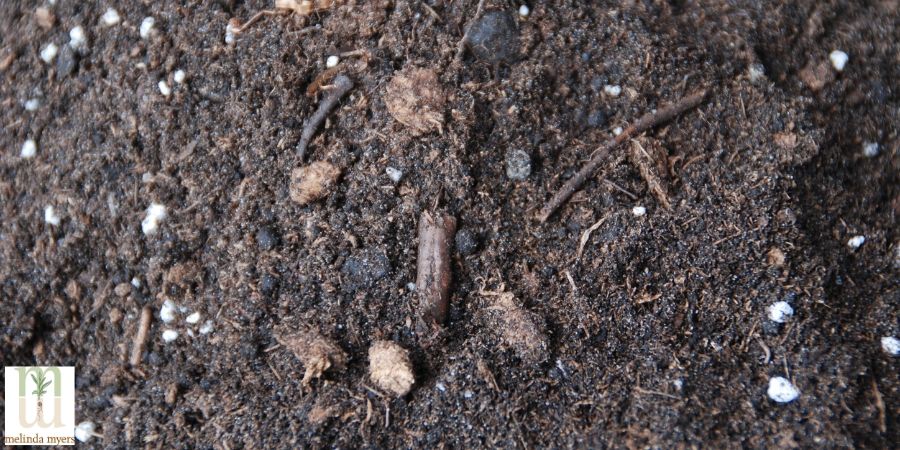What's the Difference Between Topsoil, Compost and Potting Mix?
- horticulturist and gardening expertJanuary 4, 2020
You hear and read it all the time “Quality soil is the foundation of beautiful, productive and healthy gardens and containers”. It is something I include in most presentations and when answering gardening questions. Healthy soil is key to gardening success but what should you buy or add to your soil to create ideal growing conditions for your plants?
Much of gardening comes from experience but understanding the basics of soil and amendments can help shorten the learning curve. Let’s compare topsoil, potting mixes, and compost; three common planting media. Understanding their differences and best uses will help you invest wisely and achieve the gardening results you desire.
What is Topsoil?
Topsoil is used to create new or raised planting beds and improve existing garden soil. True topsoil is the uppermost portion of the ground beneath our feet. It contains organic matter that gives it the typical darker color. Its structure makes it easier to cultivate and better able to absorb water. The higher level of biological activity, insects and microorganisms, reduces compaction and increases soil health.
Unfortunately, this upper layer is the first to be harvested by companies that sell topsoil. Once the first layer disappears the lower levels that contain more sand, clay and lime are also sold as topsoil. These lower depths, called subsoil, tend to be compacted or fast draining and difficult to till. This makes them less ideal for gardening, although some can be amended to improve plant growth.
How Do I Select a Topsoil?
Most states do not have regulations on the makeup of topsoil being sold. That means you need to be an informed and discerning consumer. A visual inspection is a good place to start but this alone is not enough. Dark soil may indicate a desirable level of organic matter but it may also signify the soil was dredged from acidic wetlands. These types of soil do not work well in a typical garden setting. In addition, some vendors add wood ash to subsoil to darken the color without improving the soil.
After a visual inspection do the feel test. Grab a handful of moist soil and gently squeeze. It should crumble into smaller pieces. Then wet a handful and run it through your forefinger and thumb to create a ribbon. Sticky samples contain a high percent of slow-draining clay, gritty soil has a higher percent of sand that drains quickly and silt feels like flour. A soil that contains some of all three is better for gardening.

(Bagged Garden Soil)
Some topsoil is harvested from farmland being developed for businesses and housing, forests being cleared or abandoned fields. This soil may contain lots of weed seeds, invasive plants, and jumping worms or herbicide residue. No one wants to spend money on unwanted surprises that result in more work or problems to manage.
The best option is to ask the topsoil vendor for soil test information. Most do not test their soil before selling. You may decide to take a sample and send it to the University Extension or a State certified soil testing lab for analysis. Ask for the basic testing and if you are growing edibles consider having them check for heavy metals as well.
This approach may not be practical. Once you get the test results the soil you tested may have been sold and new topsoil from a new location or subsoil is now available.
The most practical solution is to know your topsoil supplier. Ask friends and family for recommendations on where they purchase topsoil and if they have been satisfied with the product. And ask the vendor you select for information about the soil they sell. Get information on where the soil was collected, was it amended and screened to remove large stones and debris and did they amend subsoil to create planting mixes. And take a whiff. Don’t buy soil with a chemical smell or off-odor.
When buying bagged soil you will need to depend upon the sales staff. Ask the same questions and see if they have a broken bag you can examine. Just like buying bulk topsoil the soil in the bags may not be consistent from one bag to the next.
How Do I Use Topsoil?
Once you select a topsoil or blended topsoil mix be sure to use it properly for best results. Incorporate it into the top 8 to 12 inches of soil when adding an inch or two to an existing garden. This creates a consistent soil mix in the root zone for better drainage and moisture-holding ability. Make sure berms and raised garden beds of purchased topsoil are deep enough, preferably 12 inches or more, to provide adequate drainage and support the plants you are growing.
Do not use topsoil alone in containers. It can become compacted and saturated with water limiting air space that is important for healthy plant growth. Topsoil is occasionally added to potting mixes in large containers for increased moisture-holding and added weight needed to support large plants.
What is Compost?
Compost is an amazing soil amendment made from organic materials such as plant-based food scraps, decomposed plant trimmings and animal manure combined with a bit of soil or finished compost and fertilizer. This amendment is added to soil to improve aeration and drainage in clay soils while increasing the water and nutrient retention of sandy rocky soils. It feeds your plants and the good soil microorganisms to create a healthy growing foundation for your gardens.

(Soil Amendment)
Use compost to improve garden soil, topdress your lawn, as a component in potting mixes or for mulching gardens and houseplants. Growing directly in compost is not usually recommended. Water retention and support may be lacking in a 100% compost growing medium. Mixing compost with topsoil or potting mixes provides all the benefits of compost and your garden soil or potting mixes.
You can make your own compost or purchase it in bulk or bags. The raw ingredients used to make the compost, its age and the processing (composting) method used influence the nutrient value and quality. This means the end result, compost, can vary from batch to batch.
How Do I Select a Compost?
Just like buying topsoil, ask the compost vendor for details about the ingredients, processing, and quality control used when creating their product. Review any available test data and ask about potential of pesticides, weed seeds, and invasive plants or pests. Some states have strict standards for composting. Contact your local Extension Service to find out if your state has standards to ensure compost vendors are producing a quality product.
Take a look at the compost. Finished quality compost is dark and crumbly and has a mild earthy smell. It should be moist not overly dry or wet. Avoid extremely hot compost that is still in the midst of the composting process. Finished compost may be warm and give off some steam.
Check the label when purchasing bagged compost. More detail is now being provided since consumers are requesting assurances the product they buy is organic. Look for words on the label such as organic, free of pesticides and contaminants and OMRI listed. The Organic Materials Review Institute (OMRI) is a private, nonprofit organization that determines if a product meets the organic standards of the United States Department of Agriculture (USDA) National Organic Program. The OMRI listing on the bag means the compost is approved for organic use according to USDA rules.
(Compost Pile)
How Do I Use Compost?
Incorporate 2 to 4” of finished compost into the top 12 inches of soil when starting a new garden. Make yearly additions of 1 to 2” to existing annual flower and vegetable gardens. This can be tilled in or spread over the soil surface in no-till gardens.
You’ll be adding a variety of essential nutrients that will be available to the plants over time, help suppress disease and insect pests that are common in poor soil and improve water infiltration, absorption, and drainage. All this means a healthy garden that requires less water, fertilization and ongoing maintenance. Plus incorporating compost into garden soil helps keep water where it falls conserving and improving water quality and recycles landscape trimmings and kitchen scraps keeping them out of landfills.
Spread a 1 to 2” layer of compost over existing perennial gardens every few years to provide nutrients and improve soil drainage and water holding ability. Insects and microorganisms will move the compost into the soil near the plant roots. Speed up the process with vertical mulching. Spread the compost then use an auger bit on your drill to create 4 to 6 inch deep holes throughout the garden bed. You’ll aerate the soil while incorporation the compost into the soil.
Coarse mulches can be used as mulch in gardens and planting beds. Organic mulches like this help suppress weeds, conserve moisture, moderate soil temperature extremes and improve the soil as they break down.
Improve your lawns health and vigor with a layer of compost. Spread a half an inch of compost over the soil surface. Use a leaf rake to spread it across the lawn. Consider applying compost after aerating or dethatching the lawn to maximize the benefits.
Compost is often an ingredient in blended garden and potting mixes. Some gardeners add their own to further improve the growing conditions. Check with the vendor or read the label for insight into what the mix contains before adding any additional amendments.
What is Potting Mix?
You’ll find a variety of bags labeled as planting mix, potting mix, container mix and more. Check the label to see what the bag contains and recommendations for its use.
For now, let’s focus on potting mixes. These usually contain inorganic and organic materials and may also include sand and mineral soil. They may or may not be sterilized to kill weed seeds and pests. If it doesn’t say sterilized it probably isn’t.
Many potting mixes are labeled as “Soilless”. They consist of peat moss, sphagnum moss, and compost for moisture retention, vermiculite or perlite for drainage but do not contain mineral soils such as sand or clay. They are lightweight and blended to hold moisture while draining well.
Some potting mixes are modified to accommodate the needs of certain plants. Orchid mixes often contain more bark for better aeration, cacti, and succulent mixes have more sand or perlite for better drainage and African Violet potting mix contains more organic matter to create a moist rich growing medium.
Organic potting mixes are also available. Many gardeners prefer to know the ingredients are free of pesticides and other contaminants. Check for the word organic and OMRI on the label.

(Potting Mix)
How Do I Select a Potting Mix?
Once again, check the label on the bag for more details on the potting mix. Some potting mixes contain a “starter charge” of fertilizer. This minimal amount of fertilizer is usually gone after two or three waterings. Some include additional fertilizer that provides small amounts of nutrients over a longer period of time. The label may say controlled-release, time-release or slow-release fertilizer providing nutrients for a certain amount of time.
Natural or synthetic wetting agents are often included to reduce the surface tension of water so it is better able to penetrate and evenly moisten the potting mix. Organic mixes often use yucca extract as a wetting agent.
Moisture retaining products are supposed to hold water near plant roots and reduce the frequency of watering. Research has not shown them to be effective but many gardeners feel they are beneficial. Be careful not to overwater and do not add more water-retaining products to mixes that contain these products.
Potting mixes should be light, fluffy and moist. Avoid bags that are waterlogged and heavy. The mix can break down, become compacted and some of the slow-release fertilizer may be pre-released and damage young seedlings when saturated with water.
How Do I Use Potting Mix?
Use potting mixes for indoor and outdoor containers. They are not designed for in-ground gardens where you will walk on the planting bed or cultivate the ground with equipment. The drainage materials like perlite and vermiculite will break down under the pressure eliminating the benefits they provide.
Moisten the potting mix with warm water before potting plants. This helps ensure even moisture throughout the pot. If the potting mix becomes overly dry you may need to do a bit more work to rewet all the mix in the pot. Set the container in a container of warm water and wait for the potting mix to rehydrate. Or water thoroughly, wait 20 minutes and water again. Repeat until you achieve success.
I choose to replace the potting mix in my annual planters each year. I use an organic mix and recycle it into my compost and eventually planting beds. That way I repurpose the mix for long-term benefits in my garden. If you don’t replace your potting mix consider refreshing it with 50% new potting mix each year. Definitely replace any mix from containers that suffered from disease or insect problems that can carry over to next season.
Whether buying topsoil, compost or potting mix do your research before making a purchase. You’ll save time, money, and frustration in the long run by avoiding problems a poor quality product can create.

